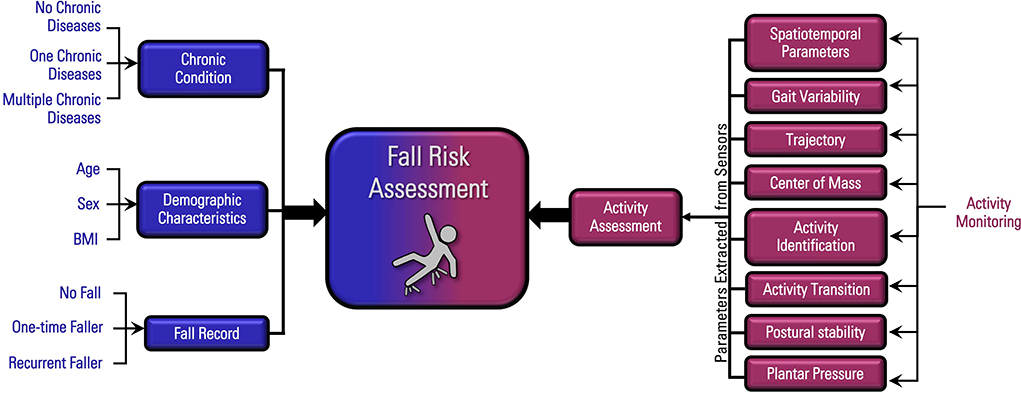Dementia Fall Risk Things To Know Before You Get This
Table of ContentsDementia Fall Risk for BeginnersGetting My Dementia Fall Risk To WorkThe 9-Minute Rule for Dementia Fall RiskFascination About Dementia Fall RiskFascination About Dementia Fall Risk
Based on indications and signs and symptoms, such as proof of head injury or a new focal neurologic deficit, computed tomography or MRI of the brain might be suggested. An analysis for reasons for syncope ought to be conducted just if there is strong uncertainty, as when it comes to reoccurring, inexplicable falls

Doctor utilize an autumn threat assessment to determine your risk aspects for dropping and make practical recommendations. Some people try to decrease their loss threat by limiting their task or making every effort to be more careful. Yet these well-intentioned behaviors aren't sufficient. An autumn risk analysis is essential because recognizing which aspects boost your opportunities of falling assists you: Minimize your danger of falling or harming yourself.
Optimize your capability to move and be energetic. Keep a healthy and balanced, independent life. All adults 65 years and older should have a first loss danger testing. Your doctor may ask you whether you: Feel unstable when standing or strolling. Have fallen in the previous year. Worry concerning falling. If you answer yes to any one of these concerns, your healthcare copyright will certainly recommend an added, a lot more thorough evaluation.
Little Known Questions About Dementia Fall Risk.

Explore this comprehensive nursing care strategy and management guide to effectively stop risk for falls amongst people. Acquire crucial knowledge regarding the nursing analysis, nursing diagnosis, and objectives especially tailored to clients that go to threat for falls. A is defined as an occasion that causes an individual coming to rest unintentionally on the ground or flooring or various other reduced level (WHO, 2021).
Falling is the second leading cause of death from unintentional injuries worldwide. It is approximated that autumn fatality prices in the United state
Facts About Dementia Fall Risk Revealed
If this price proceeds, the CDC prepares for 7 loss deaths every hour by 2030.
Every year, over 800,000 clients are hospitalized since of drops. Nurses play a significant duty in protecting against drops for their individuals with education, assessing fall threat, producing safer settings, and supplying interventions in preventing injuries from drops. A number of risk variables and conditions add to drops, including the following:. Matured 65 years and older; lower arm or leg prosthesis; usage of assistive devices such as pedestrian, crane, and wheelchair; living alone.
Autumns are due to a number of elements, visit their website and an alternative method to the specific and environment is essential. Mean an individual is considered at high danger for drops after the testing.
All About Dementia Fall Risk
A needs utilizing a verified tool that researchers have analyzed to be helpful in naming the root causes of falls in an individual. As a person's health and situations change, reassessment is required. The level go now of loss threat can be established making use of the analysis of inherent and extrinsic elements. Standard analysis devices can also be used (discussed listed below).
Individuals are most likely to fall again if they have actually sustained one or even more falls in the previous 6 months. The older population goes to enhanced threat of fall-related readmissions based on a study determining the factors anticipating of repeat falls associated outcomes (Prabhakaran et al., 2020). Individuals with impaired recognition and disorientation may not recognize where they are or what to do to assist themselves.
Additionally, confusion and damaged judgment increase the individual's opportunity of falling. The capability of individuals to protect themselves from falls is impacted by such variables as age and development. Older individuals with weak muscular tissues are much more most likely to drop than those that maintain muscular tissue toughness, versatility, and endurance. These modifications include decreased aesthetic function, impaired shade perception, adjustment in center of gravity, unsteady gait, lowered muscular tissue strength, reduced endurance, modified deepness assumption, and postponed response and reaction times.
The smart Trick of Dementia Fall Risk That Nobody is Discussing
Less comparison level of sensitivity was rather connected with both increased prices of drops and other injuries, while decreased aesthetic skill was just associated with increased fall price (Timber et al., 2011). Sensory assumption of environmental stimuli is critical to safety. Vision and read listening to disability limit the patient's capacity to view hazards in the environments.
Older adults that have poor equilibrium or difficulty walking are extra likely to drop., or other medical problems and treatments., and usage of psychotropic drugs (Stanmore et al., 2013).
Comments on “The 3-Minute Rule for Dementia Fall Risk”